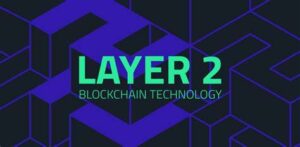
Let’s start out by defining what a Layer 1 Blockchain (BC) is. An L1 is a foundational level of a BC. Examples, of L1s are Bitcoin, Ethereum, Cardano, etc. These are chains where transactions can be made in peer-to-peer, public ledger without the need of any intermediary, such as a bank. L1s produce blocks of transactions, verify them, and rely on native cryptocurrencies to incent users to secure the chain.
L1s are not easily scalable and during high volume periods congestion slows down speed and increases network fees (gas).
Now, what is a Layer 2
Think of an express lane on a highway. They are separate chains built on top of a L1. The goal being to reduce network congestion and improve scalability and reduce gas. L2s mainly provide scaling solutions for the Ethereum L1, as Ethereum is where the majority of transactions take place.
Among Ethereum’s L2s are Optimism and Arbitrum. Bitcoin’s leading L2 is the Lighting Network.
Why are L2s a Hot Topic?
On 2/27/23 a new L2, Scroll, debuted. Scroll is a long awaited L2 that enables Ethereum to bundle thousands of transactions into a single batch allowing faster and cheaper transaction settlement while maintaining the privacy of each party (user).
Additionally, Coinbase (the large crypto exchange) announced Base, an Ethereum L2 built in partnership with Optimism, this new chain is anticipated to bring in many new users to Web3 by being an open-source vehicle for developers building crypto powered apps.
Why this matters, is that L2s are scalability solutions and a key to Web3’s growth. It should be noted that L2s are often referred to as ‘rollups’, as they bundle transactions and execute them before sending the bundle to Ethereum.
Note: I should mention that in addition to L2s there are also “side chains”. Very similar to L1s except they have been purpose built to handle Ethereum excess capacity rather than compete with Ethereum. These chains are closely aligned with the Ethereum community and host Ethereum apps – Polygon is an example of a side chain.





0 Comments